

PID stands for Proportional-Integral-Derivative, and it is a control algorithm that is commonly used in 3D printers to control the temperature of the hot end and the heated bed. The PID algorithm compares the current temperature to the target temperature and adjusts the power supplied to the heating element to try to achieve the target temperature as quickly and efficiently as possible. By setting the PID values, you can fine-tune the performance of the temperature control system to better suit your particular printer and printing conditions. This can help to improve the accuracy and consistency of your prints, as well as reduce the amount of time it takes to heat up the printer and stabilize the temperature.
Here are some general steps that you can follow to calibrate the PID values on a 3D printer:
Preheat the hot end and bed to the temperatures you will be using for your calibration.
Connect to your printer using a computer and a USB cable, and open your printer's control software (e.g. OctoPrint, Repetier, Cura).
Go to the settings or configuration menu in the control software and find the section where you can adjust the PID values.
Begin by setting the "P" value (proportional term) to a starting value, such as 30. Then, set the "I" value (integral term) to 0, and the "D" value (derivative term) to 0. These values may vary depending on your printer and your specific calibration needs.
Monitor the temperature of the hot end and bed for a few minutes to see how well the PID control system is able to maintain the target temperature. If the temperature is oscillating too much or is having trouble stabilizing, you may need to adjust the "P" value.
If the temperature is stable but takes a long time to reach the target, you may need to adjust the "I" value.
If the temperature is overshooting or undershooting the target, you may need to adjust the "D" value.
Continue adjusting the PID values and monitoring the temperature until you are satisfied with the performance of the temperature control system. Be sure to make small adjustments to the values and allow sufficient time for the temperature to stabilize before making further adjustments.
Remember to record the final PID values that you use, as you may need to use these same values in the future when printing with similar materials or under similar conditions.
Here are a few tips to help you avoid making mistakes when adjusting the PID values on your 3D printer:
Make sure that you have preheated the hot end and bed to the temperatures you will be using for your calibration. This will help to ensure that the temperature readings you are seeing are accurate and that the PID control system is working properly.
Be sure to start with small adjustments to the PID values and allow sufficient time for the temperature to stabilize before making further adjustments. If you make large changes to the values all at once, it will be harder to see the effect of the changes and you may overshoot or undershoot the target temperature.
Pay attention to the behavior of the temperature readings over time. If the temperature is oscillating too much or is having trouble stabilizing, you may need to adjust the "P" value. If the temperature is stable but takes a long time to reach the target, you may need to adjust the "I" value. If the temperature is overshooting or undershooting the target, you may need to adjust the "D" value.
Don't be afraid to experiment with different values to see what works best for your printer and your specific calibration needs. Every printer is different, so you may need to find the values that work best for your particular machine.
Remember to record the final PID values that you use, as you may need to use these same values in the future when printing with similar materials or under similar conditions. This will save you time and effort in the long run, as you won't have to go through the calibration process again every time you want to print.
The Flashforge Guider 3 Plus is a high-end, industrial-grade 3D printer that is designed for professional use. Some of its key features include:
Dual extrusion: The Guider 3 Plus is equipped with two independent extruders, which allows you to print with two different colors or materials at the same time.
Large build volume: With a build volume of 330 x 330 x 400 mm, the Guider 3 Plus is capable of printing large, complex parts or multiple smaller parts at once.
High-precision printing: The printer has a minimum layer thickness of 0.05 mm and is capable of printing with a wide range of materials, including PLA, PETG, TPU, and more.
Automatic bed leveling: The Guider 3 Plus has an automatic bed leveling system that helps to ensure that the bed is perfectly level and the first layer of the print sticks properly.
Filament detection: The printer is equipped with a filament detection system that will pause the print if it runs out of filament or if the filament gets stuck.
Easy to use: The printer has a color touch screen and is easy to set up and use, even for people who are new to 3D printing.
Overall, the Flashforge Guider 3 Plus is a powerful, reliable, and user-friendly 3D printer that is well-suited for professional use in a wide range of applications.